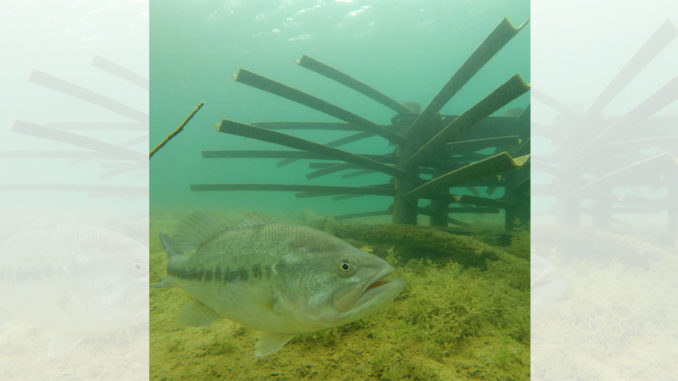
Agency to place new fish attractors
The N.C. Wildlife Resources Commission is asking for angler input on locations for 100 fish attractors it will purchase through a grant it recently received from the Catawba-Wateree Habitat Enhancement Program (CWHEP).
The Commission was awarded $37,670 to improve fish habitat on five Catawba watershed reservoirs, including Lake Norman. The agency will use a portion of the grant to purchase 100 Mossback fish attractors, which will be deployed at 20 locations around the reservoir.
“With this many fish attractors, there is an opportunity for the public to help install some of them around the lake,” said Casey Grieshaber, the Commission’s District 6 fisheries biologist.
Anglers should submit their suggested sites to Troy Thompson or Casey Grieshaber. Because of boater safety and landowner concerns, Duke Energy, which owns the reservoir, requires fish attractors to be placed at a water depth of 16 feet below full pool and 121 feet away from properties.
Commission will place 160 attractors in four other lakes
While Lake Norman will be getting 100 new fish attractors, four other reservoirs will be getting fish attractors to refurbish existing sites. The remaining 160 fish attractors funded through the grant will be placed in lakes Hickory, James and Rhodhiss, as well as Lookout Shoals reservoir, beginning this spring and continuing through December 2020.
The fish attractors are assembled from plastic components and provide a convenient and effective means to diversify aquatic habitats and concentrate fish to enhance fishing opportunities.
“The Wildlife Commission has been adding artificial structure to reservoirs as an effective approach to manipulating fish habitat in a variety of Piedmont reservoirs,” Grieshaber said. “Artificial habitat is often used to offset the loss of natural structures, such as standing or fallen timber, due to clearing or decay. It also concentrates fish for anglers, while increasing food and cover for fish.”
The CWHEP is a cooperative initiative by Duke Energy, the Commission and the South Carolina Department of Natural Resources, to provide funding for habitat creation, enhancement and protection for fish and wildlife adjacent to and in the Catawba-Wateree watershed and associated reservoirs. HEP is supported through fees charged to property owners and developers applying for lake use permits and from contributions by Duke Energy. Visit CWHEP webpage for more information.
For an interactive map of fish attractors installed and managed by the Commission, visit the agency’s fish attractor page.




Be the first to comment